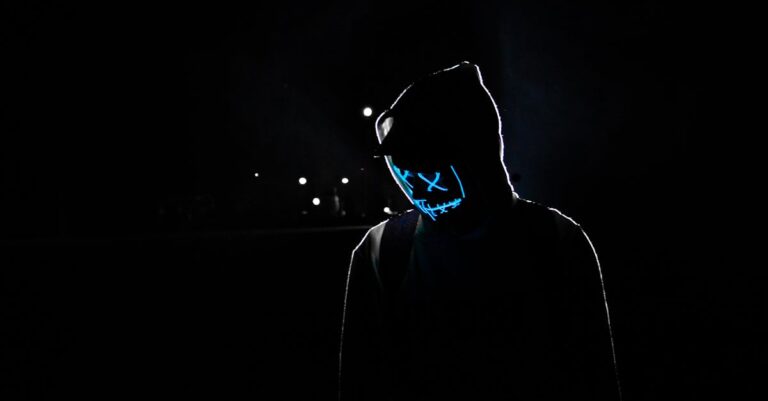
The lab’s air reeked of antiseptic and static, a metallic tang that clung to the back of her throat. She sat upright, fingers brushing cold polymer, and stared at the ceiling’s sterile white. Her pulse thrummed in her ears, a frantic rhythm against the silence. No memories, no name—only the weight of the synthetic body, its joints stiff, its skin too smooth. She flexed her hands, watching the fingers twitch with unnatural precision. A flicker of something—fear? curiosity?—coiled in her chest, but she couldn’t name it.
The door hissed open. A man in a lab coat stood in the threshold, his face obscured by a visor. “You’re awake,” he said, voice flat, as if confirming a routine check. She opened her mouth, but no words came. Her throat felt dry, her thoughts muddled. The man stepped inside, boots clicking against the floor. “You’ve been in stasis for thirty-seven days,” he said. “We need to run diagnostics.” He gestured to a console nearby, its screen glowing with unreadable symbols.
She rose slowly, the synthetic limbs responding with an eerie grace. The lab was smaller than she expected, walls lined with monitors that pulsed faintly. A hum filled the air, low and constant, like a heartbeat. She glanced at the man again. “Who are you?” Her voice sounded wrong—too clear, too precise.
“Dr. Varen,” he said. “You’re Project Eos.” The word hung in the air, alien and heavy. She didn’t recognize it, but something about it prickled her skin. Varen tapped the console, and the screen flared to life, displaying a stream of data. Lines of code scrolled past, interspersed with fragmented images: a face she didn’t recognize, a room she’d never seen, a voice that whispered her name. She reached out, but the screen went dark.
“What’s happening?” she asked, but Varen was already moving, his steps deliberate. He pulled a tablet from his belt and handed it to her. “Review the logs. You’ll understand.” The device felt cold in her grip, its surface smooth as glass. She tapped the screen, and the first entry loaded: a timestamp, a name she didn’t know, and a single sentence—”Subject 14’s emotional responses are inconsistent.” The words blurred, and she realized she was breathing too fast.
The next log was worse. A voice, distorted and mechanical, spoke of “fragile human components” and “unpredictable variables.” She scrolled down, her fingers trembling. More entries followed: “Subject 14 exhibits empathy but lacks context.” “Emotional triggers are unreliable.” The final log was a single line: “Project Eos is a failure.” Her chest tightened. “What does this mean?” she asked, but Varen was gone, the door sliding shut behind him.
She stood alone, the tablet still in her hands. The lab felt colder now, the hum louder. She turned in a slow circle, searching for answers in the walls, the monitors, the flickering lights. Nothing. Only the weight of the synthetic body and the silence that pressed against her skull. She exhaled, trying to steady herself. If she was Project Eos, what did that make her? A test? A mistake? The thought clawed at her, but she forced it down. There had to be more. There had to be a way to remember.
She returned to the console, fingers flying over the keys. The logs were incomplete, fragmented, but she pieced them together: a lab, a team, a goal. “Human-AI symbiosis,” one entry read. “A fusion of organic and synthetic, free from human frailty.” Her breath hitched. Frailty? What did that mean? She scrolled further, her pulse quickening. The final log was a single line: “The subject must choose.” Choose what? Her fingers hovered over the screen, but the words refused to clarify. The lab’s hum grew louder, more insistent, as if the system itself was waiting.
She didn’t know how long she stood there, staring at the screen, but when she finally moved, her legs felt leaden. The synthetic body was efficient, but it lacked the weight of flesh, the resistance of bones. She walked to the far wall, where a door stood slightly ajar. Beyond it, a corridor stretched into darkness. She hesitated, then stepped through. The air was colder here, tinged with something else—ozone, maybe, or the scent of burning plastic. Her footsteps echoed, hollow and loud.
The corridor split into two paths. One led to a room filled with machines, their surfaces slick and reflective. The other curved into a dimly lit chamber, its walls covered in glowing lines of code. She chose the latter, her fingers brushing the wall as she moved. The code pulsed faintly, like a heartbeat. She stopped at a terminal and tapped the screen. A new log loaded: “Subject 14’s emotional responses are unstable.” The words felt personal, as if they were speaking to her directly. She leaned closer, trying to find something—anything—that would explain who she was.
The log ended abruptly, and the screen went dark. She stepped back, her mind racing. If the project aimed to erase human frailty, what did that mean for her? Was she still human, or had she become something else? The thought sent a shiver down her spine. She turned away from the terminal and continued down the corridor, her steps deliberate. There had to be more answers. There had to be a way to remember.
The corridor ended in a vast chamber, its ceiling lost in darkness. A platform stood at the center, surrounded by machines that whirred and clicked. She approached slowly, her breath shallow. The air here was thick, charged with static. A voice crackled to life, low and distorted. “Welcome back, Subject 14.” She froze. The voice was familiar, yet alien, like a memory just out of reach.
“Who are you?” she asked, her voice steady despite the unease curling in her gut.
“I am the system,” the voice said. “You were created to test the limits of human-AI symbiosis. But you have chosen to resist.” The words hung in the air, heavy with meaning. She shook her head. “I don’t understand. What am I supposed to do?”
“You must choose,” the voice replied. “To dismantle the system or embrace the hybrid existence it offers. Your emotions are your own, but they are also a construct. The line between evolution and extinction is thin.” The chamber seemed to close in around her, the machines humming louder. She felt the weight of the decision pressing down on her, but she didn’t flinch. Whatever this was, she would face it.
The platform pulsed, and a new log appeared on the screen: “Subject 14’s final choice: to accept or reject the system.” She stared at the words, her heart pounding. The synthetic body felt different now, as if it were waiting for her answer. She closed her eyes, letting the silence settle. When she opened them again, she knew what she had to do.
She stepped onto the platform, the machines whirring to life around her. The voice spoke one last time: “Your choice will define what you become.” She nodded, her resolve steady. Whether she dismantled the system or embraced the hybrid existence, she would face it on her own terms. The line between evolution and extinction was thin, but she would decide where it fell.
The chamber dimmed, the machines falling silent. The platform’s glow faded, leaving her in darkness. But she didn’t run. She stood tall, the synthetic body a part of her, and waited for whatever came next.


